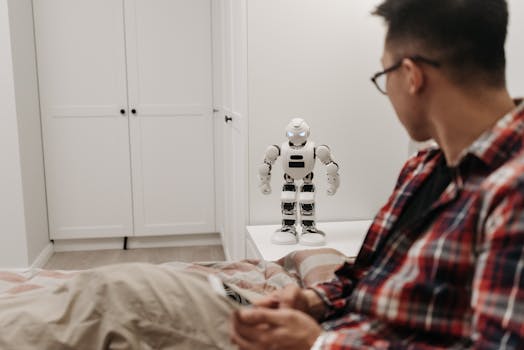
Smart Homes 2025: The Rise of AI-Driven Devices
Smart Homes 2025: The Rise of AI-Driven Devices is revolutionizing the way we live and interact with our living spaces. With the integration of artificial intelligence (AI) and machine learning (ML) technologies, smart homes are becoming increasingly autonomous, efficient, and personalized.
Introduction to Smart Homes
A smart home is a residence that uses advanced technologies to automate and control various aspects of the living space, such as lighting, temperature, security, and entertainment. The concept of smart homes has been around for several decades, but recent advancements in AI and ML have taken it to a whole new level.
AI-Driven Devices in Smart Homes
AI-driven devices are the backbone of smart homes, enabling them to learn, adapt, and respond to the needs of their occupants. Some examples of AI-driven devices in smart homes include:
- Virtual assistants, such as Amazon Alexa and Google Home, that can control various aspects of the home and provide personalized recommendations.
- Smart thermostats, such as Nest, that can learn and adjust the temperature settings based on the occupants’ preferences and schedules.
- Smart lighting systems, such as Philips Hue, that can adjust brightness and color based on the time of day and the occupants’ activities.
- Smart security systems, such as August, that can detect and respond to potential security threats using AI-powered algorithms.
Benefits of AI-Driven Smart Homes
The benefits of AI-driven smart homes are numerous, including:
- Increased energy efficiency and cost savings through optimized energy consumption.
- Enhanced convenience and comfort through personalized automation and control.
- Improved safety and security through advanced threat detection and response.
- Increased property value and appeal through cutting-edge technology and modern amenities.
Challenges and Limitations of AI-Driven Smart Homes
While AI-driven smart homes offer many benefits, there are also challenges and limitations to consider, including:
- High upfront costs and investment in AI-driven devices and infrastructure.
- Concerns about data privacy and security, as smart homes collect and transmit sensitive information.
- Potential for technical issues and glitches, such as device compatibility and connectivity problems.
- Need for ongoing maintenance and updates to ensure optimal performance and security.
Conclusion
In conclusion, Smart Homes 2025: The Rise of AI-Driven Devices is transforming the way we live and interact with our living spaces. With the integration of AI and ML technologies, smart homes are becoming increasingly autonomous, efficient, and personalized. While there are challenges and limitations to consider, the benefits of AI-driven smart homes make them an attractive and desirable option for many homeowners and residents.






